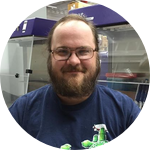Please wait...
About This Project
Various human impacts, such as pollution and buildings, can shape freshwater pond ecosystems in the urban landscape of New York City. Ponds are important centers of biodiversity in cities and benefit humans in many ways. This project will inventory the biological communities in seven ponds using cutting-edge environmental DNA collection techniques. Data from our surveys will lead to a deeper understanding of what humans can do to help conserve these important ecosystems for future generations.
More Lab Notes From This Project

Browse Other Projects on Experiment
Related Projects
Hippos as sentinels: Detecting pollution and pathogens
In western Uganda, hippos move between land and the Kazinga Channel, making them ideal sentinels of ecosystem...
Documenting unique plant and insect species within Siskiyou County's biodiverse landscape
The biodiversity in Siskiyou County is inadequately documented because of prior inaccessibility. We seek...
The Ridgeline Project: Exploring the last strongholds of Costa Rica's wild cats
The Ridgeline Project, led by The Wild Cat Imaging Project and Las Oncas, studies six threatened wild cat...



